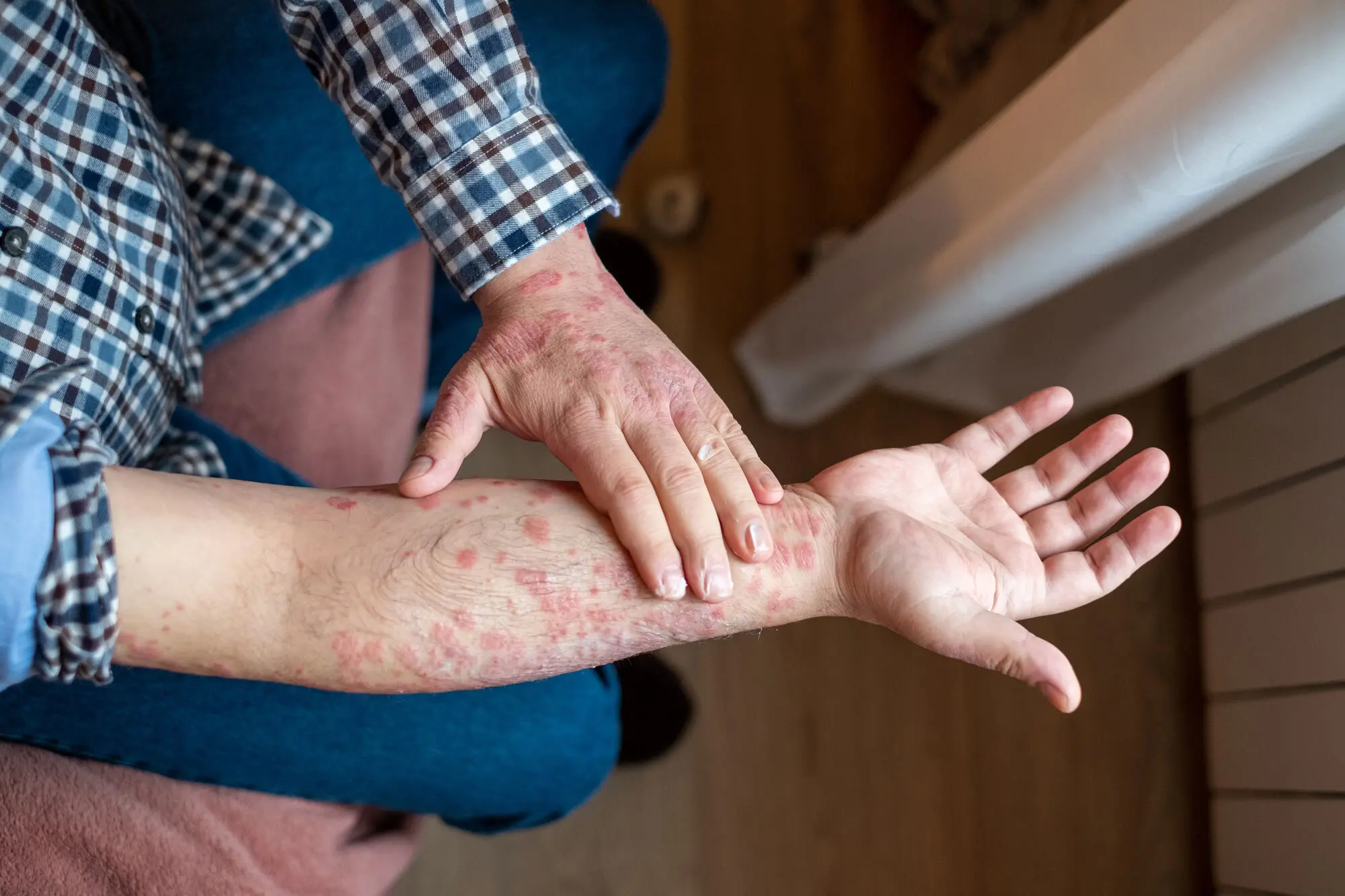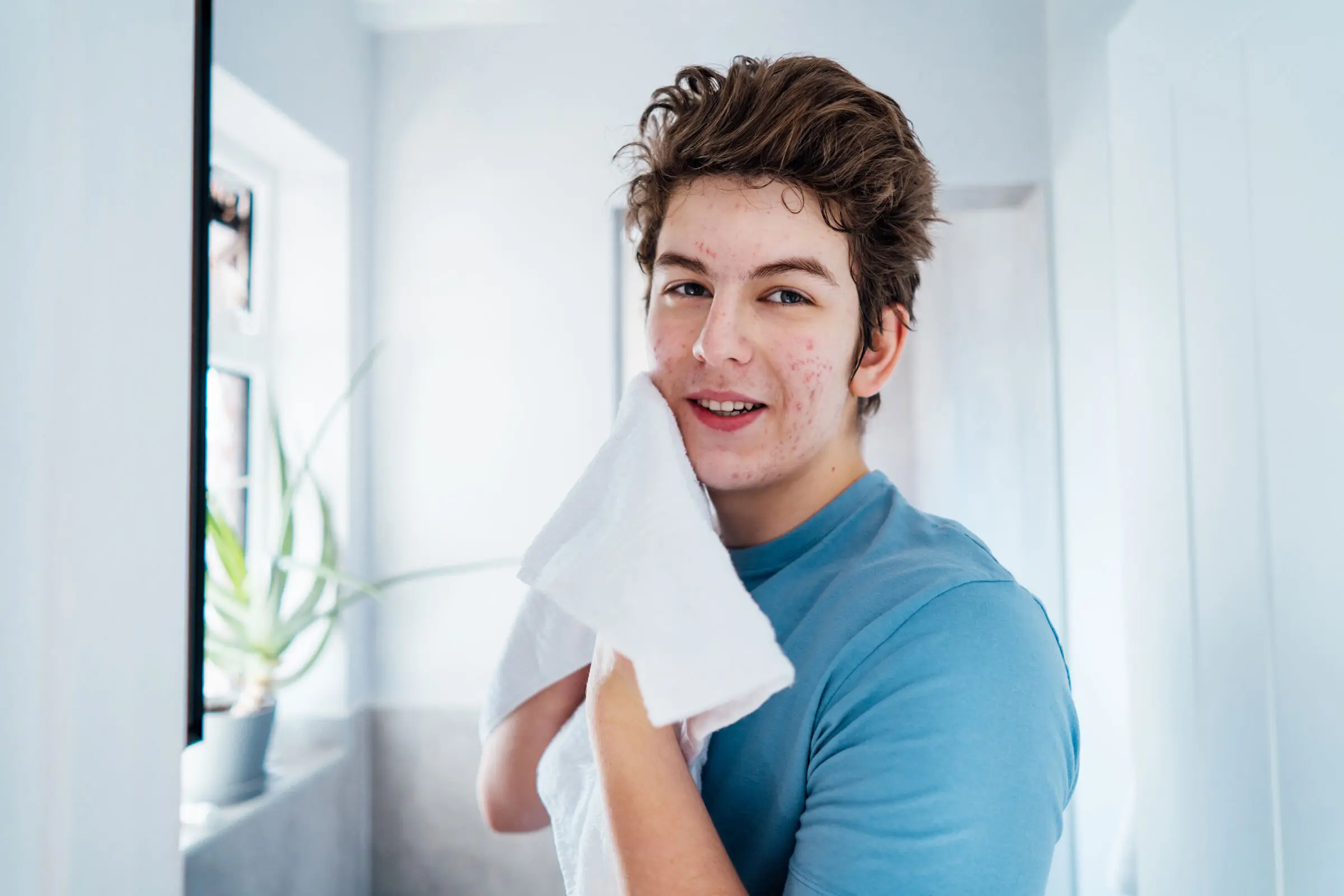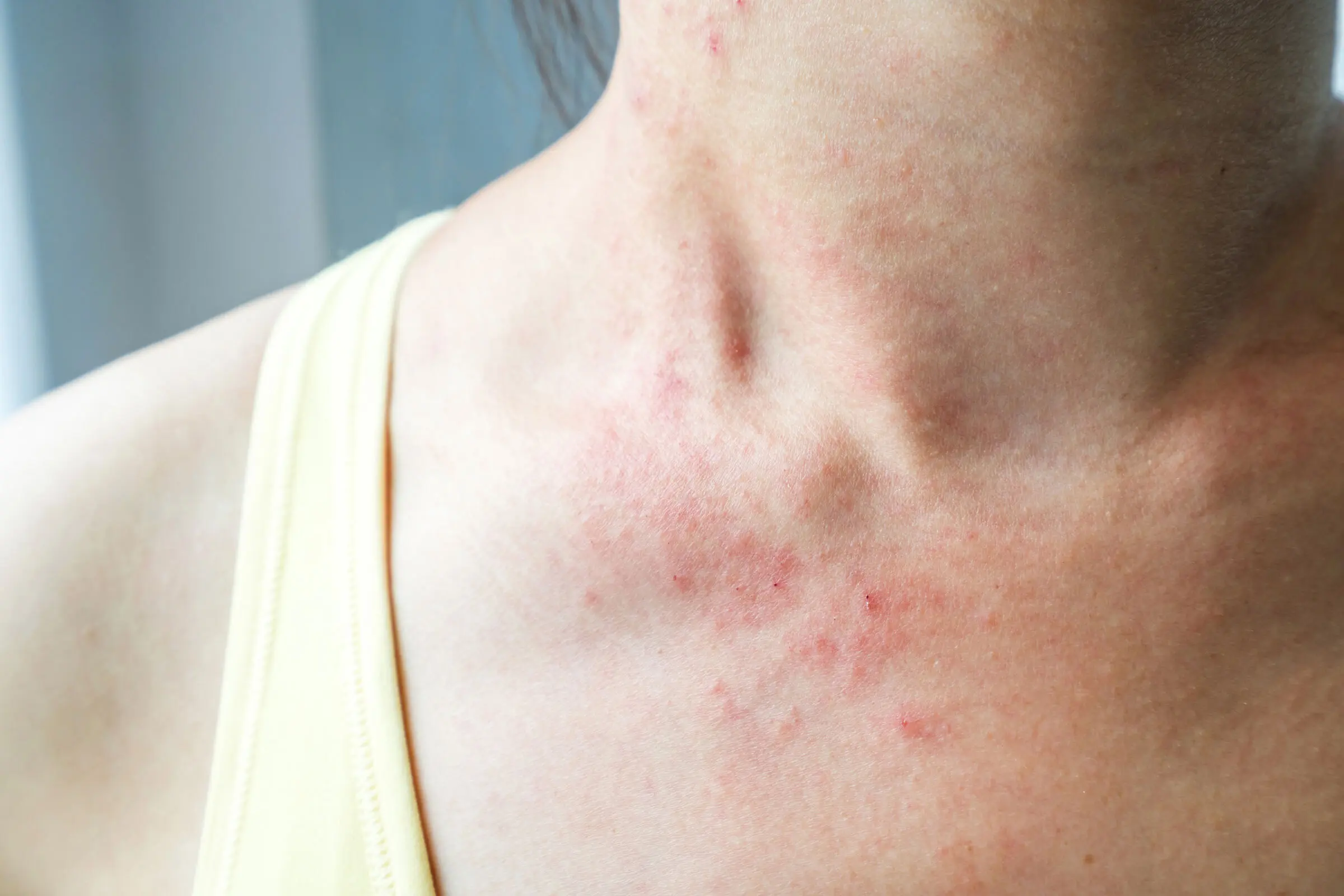Do you need a referral to see a dermatologist? A sudden rash or a new flare-up of an existing condition can be alarming. No one wants to deal with redness, bumps, or itchiness, or the self-consciousness it can bring to everyday life. While some rashes will clear up on their own, others are worth keeping a close eye on. They might be your skin’s way of telling you something more is going on with your health.
When it comes to your skin’s health and overall well-being, knowing when to consult a dermatologist can make a big difference.
How to Tell If a Rash Needs a Dermatologist’s Attention
Not all rashes are created equally. Some signs can give you a heads-up that your rash is more than just passing irritation:
Rash Covers a Large Part of Your Body
If the rash is spreading all over your body—like your chest, back, arms, or legs—it could be something serious.
Why this matters
Rashes that cover a large area can be caused by:
- Drug reactions to medications like antibiotics or seizure drugs
- Viral infections (like mono or COVID-19)
- Severe allergic reactions
What to look for
- Red or pink patches that start in one spot and spread fast
- Rash that appears right after taking a new medicine
What to do
Call a doctor or dermatologist, especially if the rash is spreading quickly or feels uncomfortable.
If any of these sound familiar, it’s probably a good time to chat with a dermatologist to help figure out what’s causing it and how to best treat it.
Rash Has Blisters or Open Sores
Blisters are small bumps filled with clear fluid. Open sores can form if those blisters break or if the skin becomes raw and painful.
Why this matters
This could be a sign of:
- Shingles – a painful rash caused by the same virus that causes chickenpox
- Impetigo – a skin infection caused by bacteria (often in kids)
- Severe allergic reactions – like from poison ivy or harsh soaps
What to look for
- Small clear or yellow blisters
- Skin that oozes, crusts, or peels
- Raw, open skin that stings or burns
What to do
Keep the area clean and see a doctor. If blisters get worse or spread, it’s important to get medicine to prevent infection.
Rash Comes with a Fever
If you have a rash and a fever, your body may be fighting off an illness.
Why this matters
It could be:
- Scarlet fever – caused by strep bacteria
- Measles – a serious viral illness that spreads quickly
- Kawasaki disease – a rare condition in kids that causes fever and rash
- COVID-19 – which can sometimes include skin rashes
What to look for
- Red rash and body temperature above 100.4°F (38°C)
- Feeling tired, weak, or having a sore throat or cough
What to do
Call your doctor right away—especially for children. A rash with a fever should never be ignored.
Rash Is Spreading Fast or Getting Worse
If a rash starts small but spreads quickly or changes a lot in just a few hours, that could be dangerous.
Why this matters
It could mean:
- An allergic reaction that’s getting worse
- A drug allergy to a new medication
- A serious skin condition like Stevens-Johnson Syndrome (a medical emergency)
What to look for
- Rash that grows in size or number within a few hours
- Skin turning purple, peeling, or forming sores
- Difficulty breathing (which can mean an emergency reaction)
What to do
Stop using any new products or medicines. Go to an urgent care or emergency room if it spreads quickly or you have trouble breathing.
[wd_hustle id=”4″ type=”embedded”/]Rash Is Painful or Feels Like Burning
Most rashes just itch. But if your rash hurts or burns, that’s a red flag.
Why this matters
- Shingles often causes sharp, burning pain before the rash even appears
- Herpes causes painful blisters, usually near the mouth or genitals
- Cellulitis is a bacterial skin infection that’s hot, red, swollen, and very painful
What to look for
- Painful skin before or after the rash shows up
- Rash feels hot to the touch
- Swelling, red streaks, or pus
What to do
If your rash is painful instead of itchy, or starts to swell, see a doctor to check for infection or nerve-related conditions.
Rash Affects Sensitive Areas
Rashes that appear on your face, eyes, mouth, hands, genitals, or inside your mouth are more serious.
Why this matters
These areas are sensitive, and infections here can spread more quickly or be more dangerous.
What to look for
- Rash near the eye (can threaten vision)
- Cracked lips with a rash inside the mouth
- Rash on the genitals or causing discomfort when going to the bathroom
What to do
These areas should always be checked by a doctor or dermatologist, especially if the rash is painful or you notice swelling.
Should I See a Dermatologist for This Rash?
Over-the-counter remedies will often do the trick for minor rashes. However, if you notice the following, it’s advisable to seek professional care:
It’s Not Going Away
- If a rash hasn’t started to get better in 5 to 7 days, get it checked.
It Keeps Coming Back
Repeating rashes might be signs of:
- Eczema – itchy, red, dry skin
- Psoriasis – raised red patches with silvery scales
- Rosacea – facial redness and bumps
These are chronic (long-term) conditions that often need a dermatologist’s care to manage.
It Looks Infected
- Rashes can become infected from scratching or bacteria getting in through broken skin.
Signs of infection:
- Yellow pus or oozing
- Red streaks leading away from the rash
- Skin that’s warm, swollen, or smells bad
- Fever
These rashes need medical treatment, like prescription creams or antibiotics.
Why Timing Matters: Don’t Wait to Find a Dermatologist
The “wait-and-see” method can be a tempting default response when it comes to rashes. While many skin irritations will go away on their own, delaying medical care for more serious rashes may lead to complications. Getting a diagnosis and starting treatment quickly is important, especially for rashes that:
Interfere with daily activities: Severe itching or pain can interfere with your sleep, your ability to focus at work, or just enjoy your day.
Cause emotional distress: While not true for everyone, visible rashes can often take a toll on your self-esteem and how comfortable you feel in social situations.
Indicate systemic issues: Some rashes are actually outward signs of broader health problems happening inside your body that need to be addressed.
Consulting with a dermatologist sooner rather than later means you can get to the bottom of what’s going on and manage it effectively.
How BrilliSkin Makes It Easy to Get Dermatology Care Online
At BrilliSkin, we understand that waiting weeks for a dermatology appointment just isn’t always an option when you’re worried about your skin. Our virtual platform connects you with board-certified dermatologists who can promptly assess your skin concerns
Here’s how it works:
- Take photos: Share clear images of your rash or skin issue.
- Complete a questionnaire: Provide details about your symptoms and medical history.
- Receive a personalized plan: Within 24-48 hours, get a treatment plan tailored to your condition.
No need for referrals or insurance—just expert care when you need it most.
Take Action Today
Don’t let uncertainty about a rash compromise your health. BrilliSkin is launching soon in New York, bringing fast, accessible dermatology services right to the comfort of your home.

Recent Blogs

Your First Online Skin Consult

How to Get Acne Help Online Without the Wait

